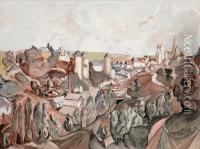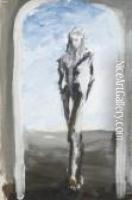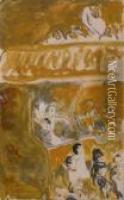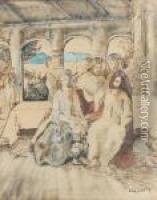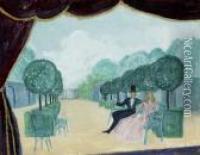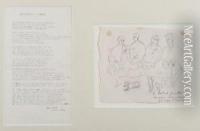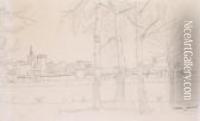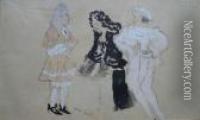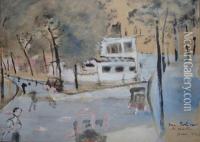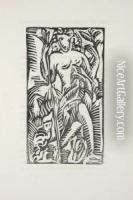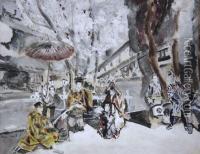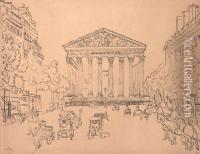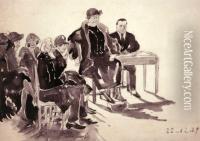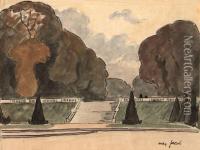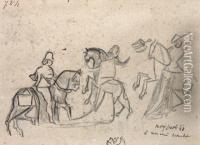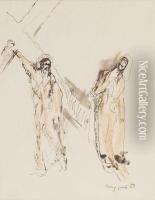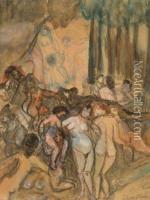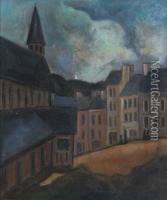Max Jacob Paintings
Max Jacob was a French poet, painter, writer, and critic born on July 12, 1876, in Quimper, Brittany. He was one of the most colorful figures of the early 20th-century Parisian avant-garde and a close friend of Pablo Picasso and Jean Cocteau. Jacob's early life was marked by a struggle with questions of faith and identity, which would continue to influence his artistic output throughout his life.
Jacob moved to Paris in 1894 and quickly immersed himself in the artistic life of the city. He became a prominent figure in the bohemian circles of Montmartre and later Montparnasse. His poetry, which blended symbolism, surrealism, and cubism, was influential in the development of modernist literature. His most notable work, 'Le cornet à dés' (The Dice Cup, 1917), is a collection of prose poems that showcases his innovative use of language and form.
In addition to his literary pursuits, Max Jacob was also an accomplished painter and draftsman. He was associated with the School of Paris, a loose group of artists living in Paris, including Amedeo Modigliani, Marc Chagall, and others. Jacob's artistic style was eclectic, incorporating elements of cubism and expressionism.
Despite his artistic success, Jacob's life was marked by personal trials. He struggled with poverty, addiction, and the complexities of his sexuality in a less tolerant era. Moreover, his Jewish background became a source of peril during World War II. In 1944, during the German occupation of France, Jacob was arrested by the Gestapo because of his Jewish heritage. He was interned at the Drancy deportation camp near Paris, where he died on March 5, 1944, before he could be deported to a concentration camp. His death was a tragic end to a life that had been so vibrant and influential in the arts.
Jacob's legacy is that of a multifaceted artist who bridged various movements and mediums. He remains a significant figure in French literature and modern art, with his work continuing to be studied and celebrated for its originality and emotional depth.
